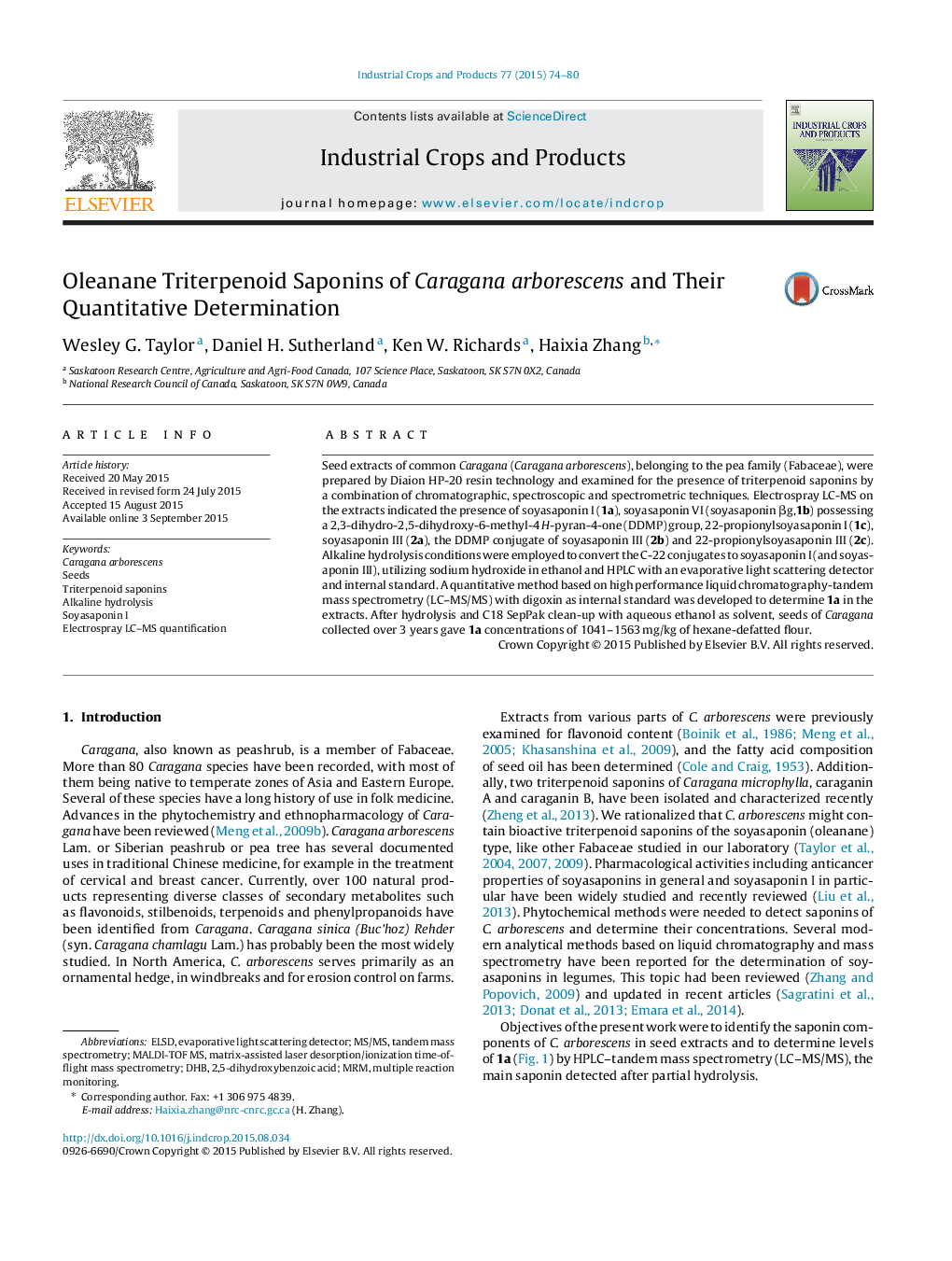| Article ID | Journal | Published Year | Pages | File Type |
|---|---|---|---|---|
| 4512633 | Industrial Crops and Products | 2015 | 7 Pages |
•Six soyasaponins were detected in methanolic extracts of Caragana arborescens.•Conjugates of 22-propionylsoyasaponin I and III were identified by electrospray MS/MS.•Mild alkaline conditions were investigated to convert C-22 conjugates to soyasaponin I.•An LC–MRM MS method was developed to quantify soyasaponin I in hydrolyzed extracts.
Seed extracts of common Caragana (Caragana arborescens), belonging to the pea family (Fabaceae), were prepared by Diaion HP-20 resin technology and examined for the presence of triterpenoid saponins by a combination of chromatographic, spectroscopic and spectrometric techniques. Electrospray LC-MS on the extracts indicated the presence of soyasaponin I (1a), soyasaponin VI (soyasaponin βg,1b) possessing a 2,3-dihydro-2,5-dihydroxy-6-methyl-4 H-pyran-4-one (DDMP) group, 22-propionylsoyasaponin I (1c), soyasaponin III (2a), the DDMP conjugate of soyasaponin III (2b) and 22-propionylsoyasaponin III (2c). Alkaline hydrolysis conditions were employed to convert the C-22 conjugates to soyasaponin I (and soyasaponin III), utilizing sodium hydroxide in ethanol and HPLC with an evaporative light scattering detector and internal standard. A quantitative method based on high performance liquid chromatography-tandem mass spectrometry (LC–MS/MS) with digoxin as internal standard was developed to determine 1a in the extracts. After hydrolysis and C18 SepPak clean-up with aqueous ethanol as solvent, seeds of Caragana collected over 3 years gave 1a concentrations of 1041–1563 mg/kg of hexane-defatted flour.
